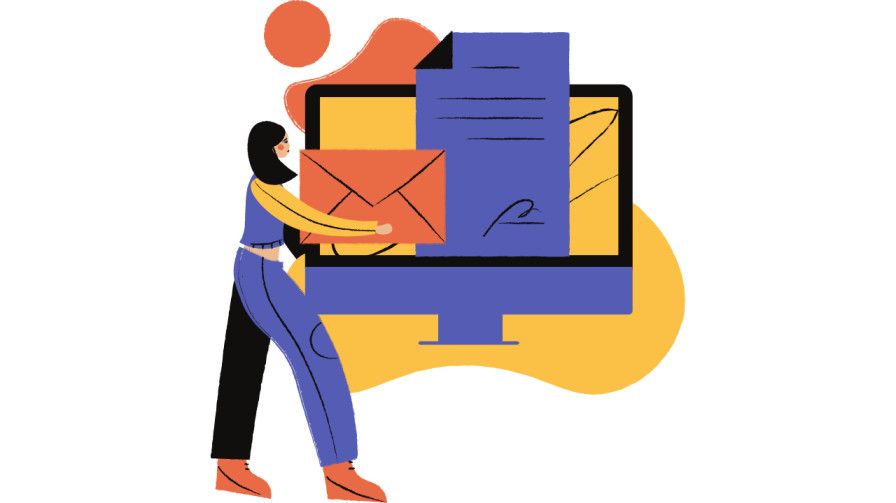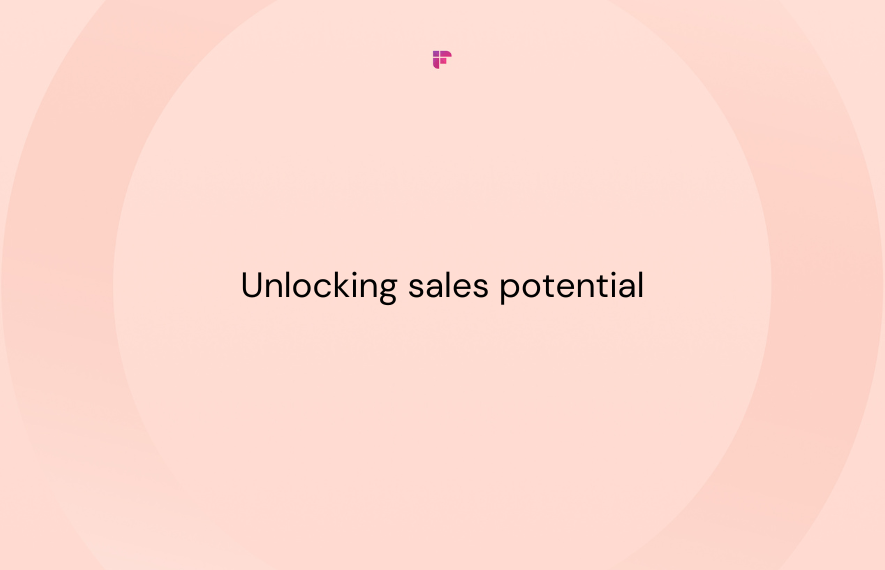Have you ever come across a product and thought, "Ah, this is exactly what I needed! Thank God someone made it!" Ultimately, that's the feeling you want all your customers to have when they use your product.
In today's saturated market, where customers are faced with a multitude of options for every purchase, it is more important than ever to create products based on a finely tuned-understanding of your target consumer.
This is why companies like Amazon prioritize research and development at an unprecedented scale—spending a staggering $87.011 billion in 2023-2024 alone. The takeaway? To stay competitive and truly serve your customers, you must invest in understanding what they want and why.
So, how do you build a product that your customers need? The starting point is to identify a need. And people's needs vary more than we think, so talking to your customers is an indispensable part of the process.
Let me give you an example of a brand that attracted its customer base by offering something that probably everyone loves (the probably is a joke)—pizza.
The word pizza gets an average of 106k mentions daily on Twitter (now X). It's a product that serves as a classic example of how smart market research makes companies stand out in an overly flooded market.
A Venice-based pizzeria, Bella&Brava, wanted to open new locations, and they partnered with a digital consultancy called OpenKnowledge to harness the power of social media.
By using image recognition technology, OpenKnowledge analyzed data from social media content that was created by the audience Bella&Brava were aiming to serve: The young, the hip, and the ever social- Gen Z in the workplace.
They found the prime cities to open, partnerships to expand into, and unique cultural differentiations. All this came from identifying quality pizza photos posted on social media—Instagram, Facebook, X—and observing what else was revealed in the images.
Lesson to take home?
As businesses revolutionize to adapt to the changing needs of today's consumers, it's incredibly important to understand how your brand fits into your customers' lives and what you can do to enhance their real, lived experience through your product.
Why is it important to ask questions to a customer?

We've already seen how asking questions to determine a customer's needs is a necessary starting point when designing or improving a product or service. But it's not just a simple feedback session for your customer, either.
In fact, customers often come into the buying process quite confused about their own needs and are unsure about which product to settle on. The confusion is often not coming from the consumers themselves but more from the sheer complexity and saturation of today's marketplace.
They're not sure what information is "decision-relevant"—that is, they're not sure what factors to consider as they make their choices. Some minor differences from product to product could just be a matter of looks, or maybe it makes a big difference in functionality, but they just have no clue.
So, your interaction with your customers will ideally be a two-way exchange. Often, customers who might be a bit muddled will realize that they need your product as you ask them questions. It's as much a sales and marketing exercise as it is a market research process.
Important questions to ask a customer to determine their needs for a product

Steve Jobs, when talking about how to develop an efficient product, famously said:
"You've got to start with the customer experience and work backward to the technology. You cannot start with the technology and then figure out when you're going to sell it."
Makes sense right? If you want to use your own time and resources effectively, then this approach is clearly the most sensible.
The goal of these questions is three-fold:
- To experience this "customer experience,"
- To understand your customers' needs and expectations (which follow from the first)
- To understand where exactly you and your product come into the picture.
Understanding the "customer experience," depending on your product, goes far beyond simply asking the customer for feedback on their experience with your product, although that is a part of it, too.
Ultimately, you want to understand the kind of customer you are catering to—what are their lives and habits like? The more you know how your customer demographic, the more you understand them as people; therefore, you can make a better product to serve them truly.
The goal is to build a strong and loyal consumer base that will trust you above all else. It's not just about your product; it's about the experience of using it and the service they get from you if they have any issues.
There are roughly two phases in which you might find yourself asking your customers for their thoughts and opinions: pre-launch (during development), and post-launch when you collect feedback.
Questions for pre-launch

1. Why do you need this product?
This is, of course, the most basic question to begin with. Keep in mind, as we said before, that consumers might be a bit confused. So, even if you don't get a clear answer, the following questions will clarify.
Ideally, they will tell you a specific task or problem they need it for. But for other products, such as tech devices or software, this may not always be applicable.
2. How do you intend to use this product? How often and for what purpose?
This is a more specific question that allows the customer to tell you how they imagine themselves using the product. It might reveal more potential uses of the product that you weren't even aware of before.
Some might intend to use it more often than you think. All of this will influence the design and prototype you ultimately come up with.
3. How do you currently manage the task or problem that you would like to use this product for?
This is a super important question that will reveal a lot about where exactly you and your product are intervening in this person's life.
You will gain a unique insight into every customer's life and be able to tailor and fine-tune your product to an even greater degree.
4. What is the most challenging or inconvenient thing about your current solution to the problem?
This lends more specificity to the last question and will drive the point to what exactly you are trying to change in the customer's life and habits.
This is another question that might surprise the customer as well. Many times, we don't realize how tedious and inconvenient our current ways of living are until someone proposes an alternative. So listen carefully here!
5. How much time do you currently spend on this problem, and how much time would you ideally spend on it with the help of our product?
Asking about time will give you a concrete goal to work towards in your process of developing the product.
6. How would your life change if you had this product?
This question is intended to create a two-way dialogue between the customer and you, for it works to convince them of just how much they need this product.
They will start to imagine how much more time they would have to do other things or how much easier a difficult task could be.
7. How much money are you willing to spend on a solution to this problem?
This is a crucial one, and keep in mind what they say about the time they spend on their current solution. The money they spend on your product, they have to get back in time saved.
If the money they're going to spend isn't proportionate to the time they save, they will not be inclined to buy your product. So compare the two answers and see what insight you get from that—make your budget accordingly!
Questions for post-launch feedback

8. What is the most useful feature of this product?
This one is pretty self-explanatory – you need to know what you're doing right.
9. What is the least useful feature of this product?
Asking about the most and least useful features might show that different consumers have different needs and expectations for the same product. You know what they say – one man's trash is another man's treasure. There may not be uniform answers to these two questions, so pay attention.
10. Why did you choose our product over our competitors?
This is an important one—you likely know who your competitors are, so name them and ask your customers what made them choose you! If they realize that reason themselves, they're more likely to stick with you for longer, too.
11. What were you expecting from this product when you bought it, and did it fulfill your expectations?
This is a more open-ended question, allowing customers to reflect on their experience using the product and reveal things you may not have thought to ask. Take note.
Use Fireflies to boost sales calls productivity

Asking customers questions and recording their answers manually can cause you to lose more than half of all the information. Instead, make your sales calls productive by adding Fireflies, an AI notetaker, to your arsenal of tools.
This AI notetaker will capture all your voice conversations, transcribe, and summarize them. That way, your sales team can focus on listening to customers' questions and actively participate in the conversation. You can leverage Fireflies to record your meetings, too. With this tool, you can analyze and summarize notes to boost post-meeting efficiency.
That being said, here's what makes Fireflies a worthy addition to your meeting tools:
- Multi-language transcription allows users to transcribe captured voice conversations in more than 60 languages, including Portuguese, Spanish, French, Arabic, German, Dutch, Korean, Russian, Japanese, Hindi, and Italian.
- Conversation intelligence helps extract insights from meetings, including the number of monologues and sentiments in conversations, quantify conversations, and understand what works and doesn't.
- Fireflies' Chrome extension auto-captures voice conversations across Google Meet, VoIP, dialers, and other web calling systems.
- Streamlines collaboration in the workplace by integrating with Asana and simplifies task management by creating automatically based on transcribed action items.
- The Soundbites feature allows users to create short audio clips of critical parts from recorded calls or meetings, turn them into snippets, and share them with their team members.
- AI Super Summaries give a detailed overview of what transpired in the meeting. These include meeting notes, action items, and important keywords and discussion topics.
- Allows easy collaboration by letting users react and leave comments at different parts of calls.
- Smart Search makes it easy to track action items, metrics, next steps, dates, and other critical data and organize and search data faster and more efficiently.
- AskFred, its ChatGPT-like assistant, can answer your queries after scanning through websites, documents, and videos. It can also generate ideas for blog topics or social media posts from the video.
Check out how to use Fireflies to capture meeting notes effectively in this easy-to-read guide.
💡 Boost Your Post-Sales Call Efficiency by Capturing Customer Conversations With Fireflies
Fireflies captures voice conversations, transcribes them in more than 60 languages, summarizes, and analyzes them. Everything you ask your customers can be used later on to improve your products.
Frequently Asked Questions
Q1. How do you identify your customer's needs?
Interviewing your target audience, performing keyword research, and social listening can help you identify your customer's needs.
Q2. Why is it important to understand customer needs?
Understanding customer needs will allow you to improve your products or services so that they meet their needs.
Q3. What customer requirements should you be meeting?
Positive user experience, good product functionality, efficacy, and fair pricing are customer requirements you should meet.







